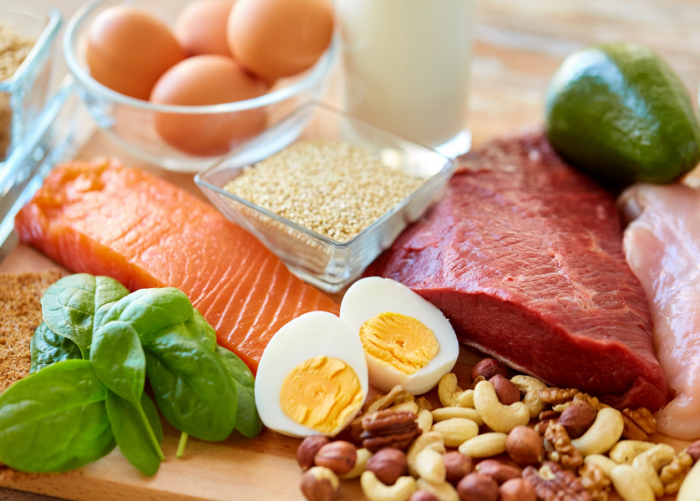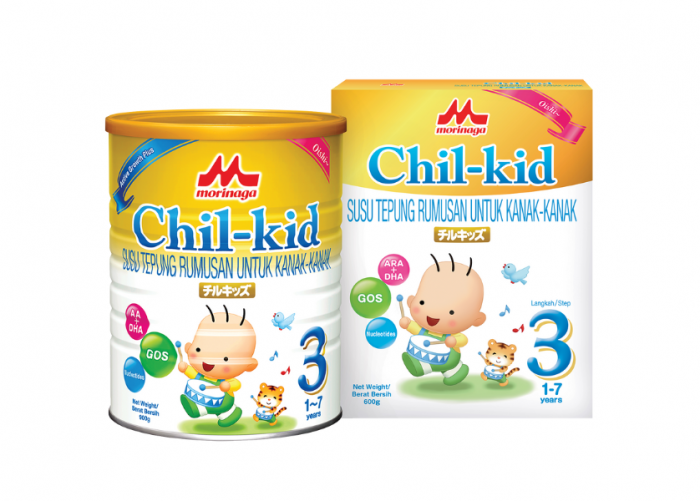Why is it important to build strong bones during childhood? Because childhood is a time when foundations are being laid for the formation of the body’s central framework ─ the skeleton, which holds up the body, provides balance and support and protects the internal organs within.
The human skeletal system comprises the skull, the neck and spine, the rib cage, the pelvic bones, the long bones for arms and legs and also hands, fingers, feet and toes. All the bones are held together by connective tissues such as cartilage, tendons, ligaments and muscles.
Childhood Critical Period to Build Strong Healthy Bones

When a child is born, the skeleton is only partially formed[1]. Many bones are still “soft” and in “parts” as the ends of the long bones are mainly cartilage where the centres of the bones are just beginning to form inside. The bones of the skull, for instance, and other parts of the skeleton do not fuse[2] until the child is aged between one to two.
The most rapid periods of bone growth occur from birth to two years as the child grows longer or taller and builds bone density, and then at puberty or adolescence when the child shoots up in height and mass (bone size). For girls this is roughly from age 11 to 14 while for boys, from age 13 to 17. During this time, the speed of bone build-up in the spine and hip increases by approximately five times.
By the end of adolescence, at the age of around 20, the growth plates[3] (the soft cartilage at the ends of long bones that facilitate new bone growth) close and harden into bone and 95% of the adult skeleton[4] would have finalised and reached “peak bone mass”. This means that by this time, the bones would be at the strongest and densest they will ever be in that person’s lifetime.
After this, the bones will stabilise and slow down their ability to take in new deposits. In fact, as adulthood proceeds, the body will start withdrawing calcium from the bones and as the person ages, he or she may begin to experience calcium depletion and bone loss. This is particularly true of both men and women when they reach middle-age.
Therefore, following a bone-healthy lifestyle before reaching peak bone mass helps a young person “stock up” on more bone mass and density (the amount of bone tissue within the bones) in readiness for adulthood.
Bones Affect Height Too

Building strong bones don’t only prevent bone disease, fractures, brittle bones and osteoporosis but did you know it also affects height?
An important component of height and body form is the size and shape of the bones. Not only is height directly related to bone size[5] but the size and shape of the bones may also contribute to their density and strength.
From birth to the onset of adolescence, bone mass growth is the same for boys and girls. However, during puberty, bone mass increases more in boys than girls. This is because of the longer growth spurt period in boys as compared to girls, resulting in boys having larger and thicker bones, and taller and bigger skeletal frames, than girls.
Nutrition to Build Strong Bones
Every parent wants their child to grow tall and strong. Of course, a child’s eventual height is determined by many factors, the chief of which is genetics or DNA. A child will grow to the height and size determined by his family’s genes. Other influences include environmental factors, lifestyle, exercise, and childhood illnesses where medications may inhibit bone development. However, nutrition plays a big role in determining the outcome of the child’s height too. In fact, experts have explained that while genetics play a role in determining height, nutrition plays a bigger[6] role in physical development.
Luckily, the nutrition needed to build strong bones and help a child grow stronger taller, is the same one that aids in brain development and lowers the risk for all kinds of other diseases and health conditions. The diet required is as follows:

Calcium[7] is a mineral most associated with healthy bones and teeth and is the super nutrient needed to build a sturdy framework in children. Although calcium is mostly known to be essential for bone-building, it also plays an important role in blood clotting, helping muscles to contract and regulating heart rhythm and nerve functions.
About 99% of the body’s calcium is stored in the bones while the remaining 1% is circulating in the blood, muscles and other tissues. Now do you see why it is so important to build a strong bone bank at the only time a body can build bone mass and density? Later in life, the body will take calcium from the bones when it doesn’t have enough to run its daily functions. The more calcium the child intakes, the stronger the bones become.
Up to 80% of a child’s calcium intake from the age of two will come from milk and dairy products such as cheese, yoghurt and other calcium-fortified juices and foods like cereals. Food sources that contain calcium include green leafy vegetables (including spinach and pak choy), fish and canned fish such as sardines, lentils, nuts and beans (including young soybeans such as endamame) and tofu made with calcium sulfate.
Food Tip for Picky Eaters:
If you have a picky eater, you can encourage your child to take in more calcium by giving him calcium-rich foods through imaginative presentation. Decorate the food and make it look bright and interesting, add more cheese to his alphabet-shaped macaroni or vegetables and omelette, cook milk pudding and pancakes, serve yoghurt as a dip and so on.
It is however, not enough to eat calcium-rich foods alone. The calcium needs to be absorbed by the body and Vitamin D is needed to do this.
Vitamin D[8] is both a nutrient and a hormone the body makes. It is a fat-soluble vitamin that helps the body absorb and retain calcium and phosphorus, both of which are critical for bone-building. Many of the body’s organs and tissues also have receptors for Vitamin D.
The body is actually able to make Vitamin D by itself through sunshine on the skin. For this reason Vitamin D is also known as “the sunshine vitamin”.
Fortunately in Malaysia, we have a lot of sunshine but children have to be exposed to outdoor activity to receive this benefit. These days however, children tend to spend more time indoors with their TV and computers. Also, people with darker skin tend to have lower blood levels of Vitamin D as the melanin (pigmentation) acts like a shade reducing the production of Vitamin D.
Vitamin D can also be obtained through food. These foods include oily fish like Salmon, egg yolks, liver, mushrooms, milk, fresh-squeezed orange juice, cereal and oatmeal.
Magnesium[9] is a component of bone; in fact 60% of the body’s magnesium is stored in bone. It is involved with the activity of bone-building cells and the parathyroid hormone which regulates calcium levels. Studies have found that men and women who have higher bone density eat a higher magnesium diet. A high bone density helps prevents bone fractures.
However, not only is magnesium good for building bone density, it also boosts energy, reduces inflammation and supports immunity.
Foods that are rich in magnesium include: Almonds, cashews, avocados, peanut butter, black beans, kidney beans, bran cereal, oatmeal, brown rice, pumpkin, soymilk, banana, raisins, spinach, yoghurt, whole-grain bread, salmon, beef and poultry.
Zinc[10], like many essential micronutrients, supports rapid growth in children as well as optimal skeletal growth and bone homeostasis. Zinc appears to be able to promote bone regeneration as well as build bone density.
Apart from supporting bone health and growth and helps develop children’s sense of smell and taste, it also boosts the immune system preventing colds and infections, promotes brain and cognitive development, wound healing, blood clotting, gut health, and wards off chronic inflammation such as skin flare-ups and rashes.
Foods high in zinc include red meat, poultry, fish, seafood and shellfish such as oysters, pumpkin seeds and sesame seeds, all kinds of nuts, fruits such as avocados, blueberries, blackberries, pomegranates, raspberries, guavas, apricots and peaches, and of course dairy and dairy products.

In addition to calcium, Vitamin D, and magnesium, another nutrient that plays a vital role in bone health is protein[11]. In fact, dietary protein ─ found in muscle, bone, hair and every body part or tissue, and which makes up the enzymes that power chemical reactions and the iron-rich red blood cells that carries oxygen in the blood ─ is a key nutrient for bone health. Protein makes up roughly 50% of the volume of bone and about 1/3 of its mass.
Under-nutrition during a child’s growth period including insufficient protein and calorie intake can severely impair bone development and even stunting.
Protein-rich foods include: meat, fish, eggs, dairy, whole grain, beans, nuts and seeds and even vegetables and fruits.
However, not all meats are made equal and children should avoid eating processed meats. Processed meat refers to any meat that has been “transformed through salting, curing, fermentation, smoking, or other processes to enhance flavour or improve preservation These include bacon from any animal including turkey and beef, hot dogs, sausages, cold cuts and deli chicken and ham.
Tips for a Bone-Healthy Lifestyle

Bones, just like muscles, gain their strength with increased use. Your child’s bones will improve as much as he or she puts them to use. Running, walking, jumping, climbing, cycling, dancing and especially stretching are very good for building balance and helping him grow tall too. As a parent, try to encourage outdoor physical activity and maintain a good balance between indoor screentime.
Most carbonated drinks have some quantity of phosphoric acid. This acid is harmful to bone health as it interrupts with the process of calcium absorption. Besides, carbonated drinks have no nutritional value and they contain too much sugar.
- Encourage Healthy Lifestyle Choices
As your child grows up, he or she will be making many independent decisions. Just as you would teach him good manners and good behaviour, encourage good lifestyle habits too so that he does not adapt to wrong habits that may impact his health, including bone health, negatively.
Morinaga Chil-kid for Bone Health

As mentioned earlier, milk plays an important role in bone health as it contains important sources of calcium and Vitamin D.
Morinaga Chil-kid ─ a Japanese formulation specially designed for Asian children aged 1 to 7 features a balanced ratio of 45 essential nutrients including AA, DHA, Omega 3&6 LCPs, GOS, 5 Nucleotides, Protein, Vitamins and Minerals.
It is high in all the necessary nutrients for bone development such as Protein, Calcium, Magnesium, Zinc and Vitamin D alongside others such as Vitamins A, Bs, C, E and K. You can rest assured that with Morinaga Chil-kid, your child will receive all the help she or he needs for optimum bone health and overall development.
Morinaga Chil-kid comes with less sugar too and has a subtle vanilla taste. Find out more about how it can benefit your child’s overall development on this site!






